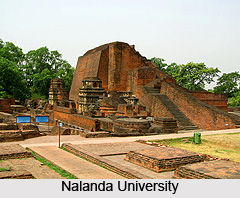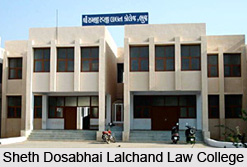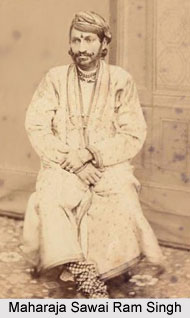 The NID entrance exam is conducted by the National Institute of Design (NID). This entrance test is organized for getting admissions to the various renowned fashion institutes of the country. National Institute of Design (NID) is an internationally acclaimed institution of the country. NID is also considered as one of the leading multi-disciplinary institutions in the field of design education, training, applied research, outreach programmes and design consultancy services. NID entrance exam is undertaken by a huge number of students every year. All those students who are interested in making a career in the field of design and fashion, they have to clear this highly competitive entrance test. National Institute of Design (NID) functions as a self governing body under the Ministry of Commerce & Industry, Government of India. Department of Science & Technology, Government of India has given NID, the recognition of a Science and Industrial Research Organisation. NID entrance test will be conducted in 12 centres and these are Ahmedabad, Bengaluru, Bhopal, Chennai, Delhi, Guwahati, Hyderabad, Kanpur, Kochi, Kolkata, Mumbai and Dubai (UAE). This test is usually conducted in the month of January.
The NID entrance exam is conducted by the National Institute of Design (NID). This entrance test is organized for getting admissions to the various renowned fashion institutes of the country. National Institute of Design (NID) is an internationally acclaimed institution of the country. NID is also considered as one of the leading multi-disciplinary institutions in the field of design education, training, applied research, outreach programmes and design consultancy services. NID entrance exam is undertaken by a huge number of students every year. All those students who are interested in making a career in the field of design and fashion, they have to clear this highly competitive entrance test. National Institute of Design (NID) functions as a self governing body under the Ministry of Commerce & Industry, Government of India. Department of Science & Technology, Government of India has given NID, the recognition of a Science and Industrial Research Organisation. NID entrance test will be conducted in 12 centres and these are Ahmedabad, Bengaluru, Bhopal, Chennai, Delhi, Guwahati, Hyderabad, Kanpur, Kochi, Kolkata, Mumbai and Dubai (UAE). This test is usually conducted in the month of January.
Application Forms
The admission announcements and the notification regarding the application form of NID entrance test are issued in the leading national and local dailies of the country. Every year, the announcements are usually released in the last week of September. The students can send their request for obtaining application forms along with the information prospectus from the second week of October. For obtaining the application form the candidates need to make a payment of the requisite amount either by cash or by a scheduled bank Demand Draft drawn in favour of the National Institute of Design, payable at Ahmedabad. The candidates can also download the application form from the official website of the institute.
Eligibility Criteria for NID Entrance Exam
The minimum educational qualification for admissions in the graduate programmes is open to all those students who have passed the Higher Secondary (10+2) examination from any recognised Board. The upper age limit for the candidates is 20 years. The eligibility criterion for the postgraduate programmes is a bachelor`s degree from any recognised university. However, the criteria differ on the basis of the course programme. The upper age limit for the candidates is 27 years. Work experience of the candidates will be given preference.
Courses Offered
1. Graduate Diploma Programme in Design (GDPD) (4 years)
Areas of specialisation are as follows -
• Industrial Design
> Product Design
> Furniture and Interior Design
> Ceramic & Glass Design
• Communication Design
> Graphic Design
> Animation Film Design
> Film & Video Communication
> Exhibition Design Textile and
• Apparel Design
2. Post - Graduate Diploma Programme in Design (PGDPD) (2 to 2 and half years)
Areas of specialisation are as follows -
• Industrial Design
> Product Design
> Furniture & Interior Design
> Ceramic & Glass Design
> Toy Design & Development
> Transportation & Automobile Design
• Textile and Apparel Design
> Textile Design
> Apparel Design & Merchandising
> Lifestyle Accessory Design
• Communication Design
> Graphic Design
> Animation Film Design
> Film & Video Communication
• IT Integrated Design
> New Media Design
> Software & User Interface Design
> Information & Digital Design
• Design Management
Pattern of Examination
NID entrance exam for the undergraduate and postgraduate design courses is specifically comprises three design aptitude tests with a total of 60 points. The main objective of the entrance test is to assess the aptitudes, perception and motivation of the aspirants that are really essential in making a design career. The test basically includes memory drawing, thematic colour arrangement, composition, animation, knowledge of proportions and perspective, visual design and abstract symbolism.
Syllabus
There is no set syllabus for the NID entrance exam. The aspirants need to prepare in several subjects of design including sensitivity to environment, creativity, composition, communication skills, general mental ability and drawing skills. The candidates should follow the test pattern of this entrance test for getting a better idea.
Selection Process
The final selection of the candidates is entirely based on the marks obtained in the written entrance test. The previous academic qualifications of the candidates also contribute to the determining factor. The short listed candidates are called for the second round of admission procedure. The candidates who are called for the second phase need to attend the studio tests and personal interview. These rounds complete the final selection process. The Admission Committee decides the procedures, grades and weightage for each year.
NID entrance exam is aptly defined as the stepping stone towards a bright and lucrative career in the field of design. This test is conducted for selecting the eligible candidates for the professional and vast design degree courses.








